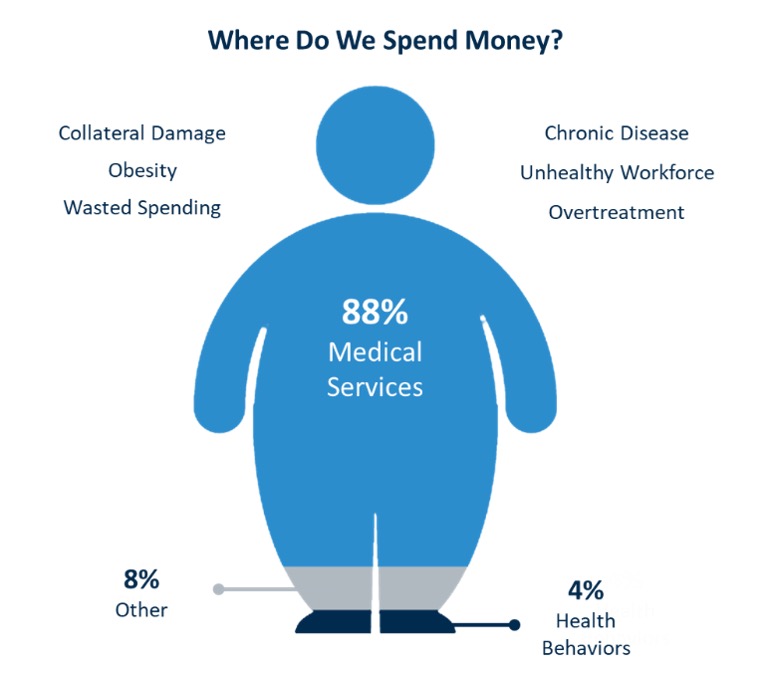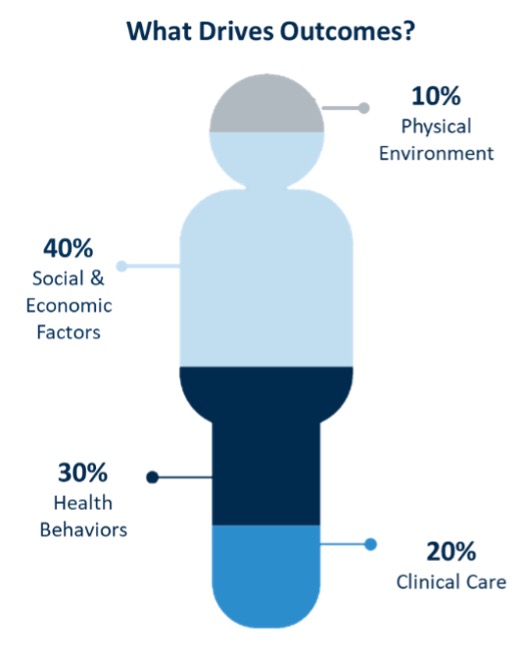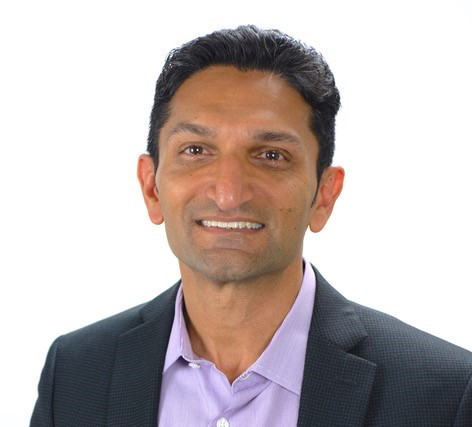By Nirav Desai
HR professionals have a difficult task in determining how to best allocate their benefits dollars to foster recruitment, retention, productivity, performance, and overall satisfaction. Invariably, the largest portion of the budget goes to healthcare, i.e., medical insurance.
The budgetary emphasis on medical care comes as no surprise. According to the Network for Excellence in Health Innovation, 88% of healthcare funds are spent on clinical care. 1 The remainder is spent on other factors that influence health outcomes – health behaviors, the physical environment, and social and economic determinants of health.

Surprisingly for some but not for others, only 20% of health outcomes are actually attributable to clinical care.2 Yet 30% of health outcomes are actually impacted by health behavior.

Within both the healthcare ecosystem and employer groups, a recognition of the strong impact of health behavior on outcomes has led to strategies such as increasing health literacy, health coaching, gamification / challenges, reminders, etc.
A cottage industry of wellness programs also has emerged around the holy grail of influencing health behaviors. Some solutions focus on broad healthcare behaviors, such as nutrition, exercise, and health literacy, while others focus on specific behaviors or conditions like smoking or diabetes.
The challenge for employers is that many of these programs fail to engage enough people or yield consistent, sustainable results. This can be frustrating for HR professionals who invest in a wellness program –even one that includes significant incentive dollars to drive participation –only to end up with lax participation or disappointing outcomes.
So, what should you look for in a wellness program intended to drive better health behaviors? There are several areas where behavior change strategies can fail:
- Failure to understand individual motivators
- Failure to understand context
- Failing to learn and adapt
Let’s walk through each one.
Understanding individual motivators
Intuitively, we know that people are not all motivated by the same things. For many, it’s economics. In the context of a wellness program, financial incentives can include cash, gift cards, medical insurance premium discounts, etc. Others are motivated by insight and education, e.g., knowing their lab work numbers and increasing their health literacy. For others, motivation might come through the competitive or social aspect of competing with colleagues or friends in a health challenge.
The big takeaway is that there is no single motivator that will work for everyone. From an HR standpoint, a wellness program or strategy should include a variety of motivators in order to reach a broad group of expected participants. Again, variety can come through financial incentives, insight and education, coaching, or gaming and social components.
On this topic, key questions for a wellness program will include:
- How does the program engage people whose health behaviors are motivated by different factors?
- What kinds of motivators are used and how effective have they proven to be?
- Which motivators will the employer have to fund or help manage?
Understanding context
We know that every individual has their own unique wellness journey. So if a wellness program does not take that into account, relying instead on generic wellness strategies for motivation and education, it will not meet individuals where they are on their journey. The most effective programs include tools such as lab work, fitness tests, biometrics (e.g., blood pressure, heart rate, and waist circumference), fitness trackers, health risk assessments and/or interviews/coaching. All of these provide a clearer health snapshot of each individual so that guidance can be provided in the context of their specific risks and goals. The key is to go beyond mere information collection toward a program that actually uses data to help guide each individual along their journey.
On this topic, key questions for a wellness program will include:
- What does the program learn about participants in order to meet them where they are on their wellness journey?
- How does the program use individual information to create personalized wellness journeys?
- Is the information secure?
Learning and adapting
We know that as life situations change, people change. For example, a woman who has successfully lost weight may want to raise her game and run a race. An otherwise healthy individual could suddenly begin to struggle with mental health issues following a death in the family. Or maybe someone who has participated in several past health challenges may become bored with the idea and decide to no longer participate.
While we’ve pointed out that programs should take people’s context into account, the fact that interests and goals change means that wellness programs cannot just rely on initial information as the only basis for the entire wellness journey. Programs must have an ongoing feedback loop to learn whether a wellness pathway is still effective, or a change is needed. Feedback loops could include intermittent questionnaires that check in on participants and their assessments of the program’s effectiveness, trackers that determine whether people are reading their notifications or responding to behavioral nudges (e.g., to be more active), or human coaches who can check in with participants for one-on-one conversations about their journeys.
Of course, with newfound insights from the feedback loop, the program should adapt as needed to help people refocus, change motivators to reignite interest, and/or create new goals and targets.
On this topic, key questions for a wellness program will include:
- How does the program establish an ongoing feedback loop to learn how participants are doing?
- How does the program use ongoing insights to improve the participant experience and journey?
Final thoughts
Looking at the big picture of what makes a wellness program succeed, you’ll notice that the failure points occur when there is less information about the individual and their wellness journey. What motivates them? Where are they now on their wellness journey? How can we use what we’re learning to guide them toward their next steps? The goal is a program centered around personalized wellness. Each employee has their own unique wellness journey based on who they are and their unique life situations. As an HR leader, aim for a wellness framework that has the versatility to suit a broad range of individuals with different goals and motivations, and the flexibility to adaptively guide people along their individual health and wellness journeys.
1 New England Healthcare Institute. The Boston Paradox, page 17.
2 University of Wisconsin Population Health Institute and the Robert Wood Johnson Foundation. https://www.countyhealthrankings.org/explore-health-rankings/measures-data-sources/county-health-rankings-model

Senior Vice President, Managing Director – Peak Health
A Division of McGriff
Nirav.Desai@McGriff.com
www.McGriff.com
https://peakhealthservices.net